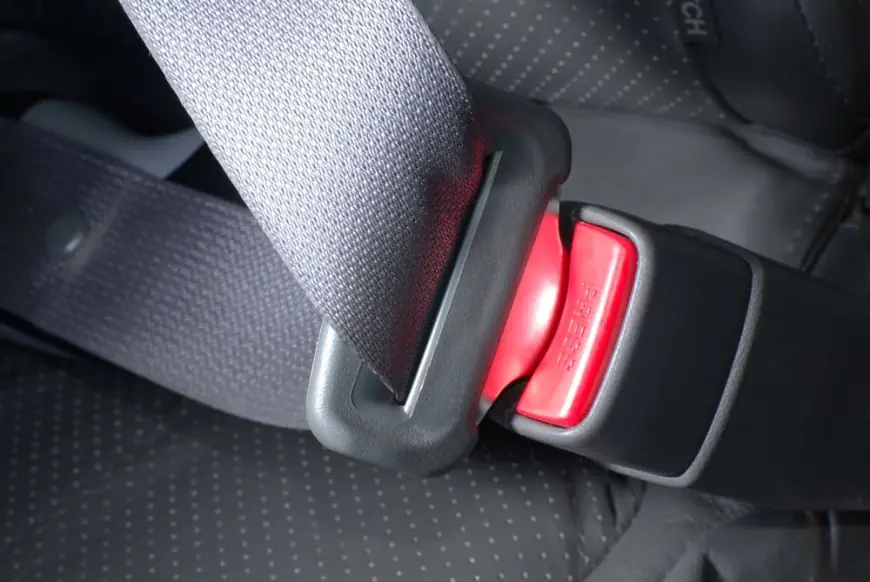Automotive Seat Belts Market 2030 Growth, Trends, Forecast
Technological innovation is a defining trend in the automotive seat belts market, with manufacturers focusing on creating lightweight, durable, and smart seat belt systems.

Industry Overview
The global automotive seat belts market is witnessing significant growth as vehicle safety takes center stage in the automotive industry's evolving landscape. With increasing government mandates, growing consumer safety awareness, and the integration of advanced technologies in vehicles, the market is undergoing a transformation that aligns safety with innovation. According to TechSci Research, the global automotive seat belts market reached USD 15.12 billion in 2024 and is projected to grow to USD 20.49 billion by 2030, reflecting a CAGR of 5.20% over the forecast period.
This robust growth is being driven by the introduction of more efficient restraint systems, the adoption of intelligent safety technologies, and expanding vehicle production, especially in emerging markets. As automakers continue to focus on occupant safety as a differentiating factor, seat belts are becoming more sophisticated, aesthetically pleasing, and seamlessly integrated into vehicle interiors.
Emerging Trends in Automotive Seat Belts
1. Smart Seat Belt Technologies
A key trend reshaping the seat belt landscape is the rise of smart systems integrated with sensors, pressure indicators, and connectivity modules. These smart belts provide real-time feedback, alerting drivers and passengers about improper usage. Paired with data analytics, these systems can monitor usage patterns, helping fleet operators and safety regulators promote better driving behavior.
2. Eco-Friendly and Lightweight Materials
The automotive industry is also moving toward sustainability by utilizing eco-friendly materials. Seat belts are being manufactured using recycled fibers and sustainable textiles, contributing to vehicle lightweighting and reduced carbon emissions. Automakers are investing in R&D to maintain safety standards while reducing environmental impact.
3. Integration with Advanced Driver-Assistance Systems (ADAS)
Modern vehicles are equipped with ADAS, and seat belts are now becoming part of this interconnected safety ecosystem. The integration ensures synchronized performance between airbag deployment, seat belt tightening, and impact absorption, enhancing passenger safety during collisions.
4. Aesthetic and Functional Customizations
Manufacturers are responding to consumer demand for personalization by offering customizable seat belts. Features like color-coded straps, branded logos, and illuminated belt buckles are gaining popularity, particularly in luxury vehicles. These aesthetic innovations enhance visibility and usability without compromising safety.
Download Free Sample Report: https://www.techsciresearch.com/sample-report.aspx?cid=22697
Market Drivers
1. Stringent Regulatory Frameworks
Governments across the globe are enforcing stringent laws mandating the use of seat belts in all vehicle types. Regulatory bodies such as the National Highway Traffic Safety Administration (NHTSA) and European Union are constantly updating vehicle safety protocols, fueling the demand for advanced seat belt systems.
2. Rising Awareness of Passenger Safety
Global campaigns, media coverage, and educational initiatives are significantly influencing consumer behavior toward prioritizing safety. In developing economies, awareness about road fatalities has led to increased adoption of seat belts.
3. Automotive Production Growth
Emerging economies are experiencing a surge in vehicle production due to urbanization and rising disposable incomes. This increase directly drives the demand for seat belts as OEMs look to comply with safety mandates.
4. Insurance and Incentive Programs
Insurance providers increasingly offer premium reductions for vehicles equipped with advanced safety features. These incentives encourage automakers and consumers to prioritize seat belt adoption.
5. Technological Innovation
Technologies such as seat belt pre-tensioners, load limiters, and integrated airbag systems have significantly improved occupant protection, increasing market appeal.
Industry Key Highlights
-
The global market is expected to grow from USD 15.12 billion in 2024 to USD 20.49 billion in 2030.
-
Passenger cars continue to dominate the market due to increasing safety feature integration.
-
North America is leading in regulatory compliance and adoption of intelligent safety technologies.
-
OEM sales channels remain dominant, but the aftermarket segment is also growing steadily.
-
Leading manufacturers are focusing on product diversification and eco-friendly innovations.
Segmentation Overview
By Seat Belt Type:
-
Three-Point Seat Belts
-
Five-Point Seat Belts
By Sales Channel:
-
OEM
-
Aftermarket
By Vehicle Type:
-
Passenger Cars
-
Commercial Vehicles
By Region:
-
North America
-
Europe
-
Asia-Pacific
-
South America
-
Middle East & Africa
Regional Insights
North America
North America continues to lead the market with a strong regulatory framework and consumer preference for safety. Government mandates have accelerated the adoption of technologies like pre-tensioners and load limiters. Additionally, automotive manufacturers are investing heavily in R&D, introducing advanced materials and intelligent systems.
Asia-Pacific
The Asia-Pacific region is poised for the fastest growth, thanks to rapid vehicle production, government safety initiatives, and a burgeoning middle class. Countries like China and India are making substantial investments in automotive infrastructure and safety education, boosting market penetration.
Europe
Europe's focus on road safety and emissions standards positions it as a mature but innovation-driven market. The region is also witnessing increased adoption of sustainable and recyclable materials in seat belt production.
Future Outlook
As vehicle safety becomes a top priority for governments and consumers alike, the automotive seat belts market is set to evolve rapidly. Innovations in smart restraint systems, predictive safety analytics, and integration with in-vehicle networks will redefine the future of occupant protection.
In the coming years, the shift toward electric and autonomous vehicles will necessitate new seat belt designs compatible with evolving cabin configurations. With ongoing research in bio-mechanical engineering and digital safety monitoring, seat belts will become increasingly adaptive, user-friendly, and effective.
The aftermarket for seat belts is expected to witness steady growth, especially in emerging economies where older vehicles are being retrofitted with advanced safety components. Overall, the market outlook remains bullish, driven by innovation, compliance, and consumer-centric product development.
10 Key Benefits of the Research Report
-
In-depth market size projections through 2030.
-
Comprehensive segmentation analysis by type, sales channel, and region.
-
Identification of key growth drivers and emerging trends.
-
Competitive landscape with profiles of leading companies.
-
Insights into regulatory and safety standards across regions.
-
Future outlook and forecast for key regions.
-
Customizable data for strategic decision-making.
-
Market challenges and risk analysis.
-
Analysis of OEM and aftermarket dynamics.
-
Strategic recommendations for investors and manufacturers.
Competitive Analysis
The global automotive seat belts market is highly competitive, with leading players continually innovating to stay ahead. Key companies are focusing on R&D to create lighter, stronger, and more integrated seat belt systems.
Top Players:
-
Autoliv Inc.: A global leader in automotive safety, focusing on smart restraint systems and collaboration with automakers.
-
ZF Friedrichshafen AG: Known for cutting-edge seat belt pre-tensioning and load-limiting technology.
-
Robert Bosch GmbH: Offers a wide portfolio of safety solutions, including integrated restraint systems.
-
DENSO Corporation: Specializes in advanced driver-assistance and restraint integration.
-
AISIN CORPORATION: Emphasizes durable and efficient safety component manufacturing.
-
Joyson Safety Systems: Develops innovative and stylish seat belt options for global markets.
-
Tokai Rika Co., Ltd.: Focuses on comfort-oriented seat belts and sustainable production.
-
Hyundai Mobis Co., Ltd.: Combines ADAS with safety belts for next-gen vehicles.
-
Continental AG: Drives innovation in intelligent occupant safety systems.
-
FORVIA Group: Known for lightweight components and integrated electronics.
These companies are enhancing their product portfolios through strategic partnerships, acquisitions, and localized production to address regional demands.
Conclusion
The global automotive seat belts market is on a trajectory of sustained growth, backed by rising safety awareness, stringent regulations, and technological innovation. As automakers and regulators continue to prioritize occupant protection, seat belts will remain a cornerstone of automotive safety. Manufacturers that align innovation with compliance and consumer preferences will thrive in this dynamic and competitive market.
From smart technologies to sustainable materials, the future of seat belts is not just about restraint—it’s about intelligent, integrated safety systems that enhance both user experience and life-saving capability.
Contact Us-
Mr. Ken Mathews
708 Third Avenue,
Manhattan, NY,
New York – 10017
Tel: +1-646-360-1656
Email: [email protected]
Website: www.techsciresearch.com
What's Your Reaction?
 Like
0
Like
0
 Dislike
0
Dislike
0
 Love
0
Love
0
 Funny
0
Funny
0
 Angry
0
Angry
0
 Sad
0
Sad
0
 Wow
0
Wow
0



















































